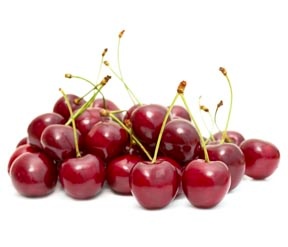 Early in 2015, entomologists in Michigan were concerned about the possible threat of the spotted wing drosophila (SWD) on tart cherries. The same pest had wreaked havoc on soft fruits and berries, so producers in the nation’s largest tart cherry production area had the right to be worried.
Early in 2015, entomologists in Michigan were concerned about the possible threat of the spotted wing drosophila (SWD) on tart cherries. The same pest had wreaked havoc on soft fruits and berries, so producers in the nation’s largest tart cherry production area had the right to be worried.
According to SpottedWing.org, the SWD is “an insect pest of economically valuable small fruit and tree fruit crops.” The specie is particularly well known in the Pacific Northwest, but has spread to established fruit growing regions across the country. It was discovered in 2014, that “insecticides that are effective against cherry fruit fly are not effective against SWD. So presence of the insect could result in the growers having to apply from 1.5 to 3 more sprays per season… using different materials.”[i] Experts consider the SWD a “game changer for tart cherry growers.”[ii]
The extra applications of insecticides can impact the Maximum Residue Limits (MRL), which are the legal levels of concentration for pesticides in or on food or feed. MRLs are in place to ensure that consumers are not exposed to high levels of pesticides. Tart cherries are exported around the world, so “it is important that insecticide residue levels be low enough to meet the lowest standards they may encounter in other countries.”[iii]
Determining when and what to apply to reduce the impact of SWDs on tart cherries is clearly a challenge. Recently, members of the Michigan State University Extension fruit team developed tools that support the state’s tart cherry and apple exporters. The tools “provide guidance to Michigan apple and tart cherry growers in selecting materials to manage key pests close to harvest with a particular market in mind.”[iv]
The team tested six insecticides registered for apple use and five insecticides for tart cherries to determine their rate of degradation after they were applied. The degradation curves were used to create adjusted pre-harvest intervals that would help harvesters comply with MRLs for U.S. and other export markets. Colored charts “indicate when the insecticides tested would or would not be safe to use given a target market.”[v]
- Red means the product should not be used during this time either because of EPA label restrictions or due to a high risk of exceeding MRLs for a given market.
- Yellow means the product should be used with caution during this time given all the variables (e.g., tank mixes, application method and calibration, use of adjuvants, environmental conditions post-application and post-harvest handling) that can impact the time it takes for a residue to degrade in order to meet the MRL for a given market.
- Green used in the chart means that the product is likely to be safe for use at this time with low risk of residue remaining at harvest that would exceed MRLs for a given market.
Charts for apples and tart cherries are available on MSU.edu.
Mark Whalon, professor and director of the Pesticide Alternatives Lab at Michigan State University told growers at the West Central Spring Horticultural Meeting in Hart, Michigan.
“MRLs are crucial to growers because governments all over the world are regulating how much pesticide can be in a product. So if a grower wants to compete in the marketplace, he or she must be able to meet those MRL standards or they can’t gain access to that marketplace.”
Testing for pesticide residues in agricultural commodities can be completed using the QuEChERS is a Quick-Easy-Cheap-Effective-Rugged-Safe extraction method. While the original unbuffered method was developed for plant matrices, since 2003, two additional buffered methods were created and adapted to many additional matrices such as fruit. The rise in popularity of the QuEChERS technique and the increase in sample testing have driven the need for automation for this extraction technique. Teledyne Tekmar’s AutoMate-Q40 streamlines the two part QuEChERS method from the extraction to the cleanup step.
Click here to read recently published application notes on the AutoMate-Q40
[i] http://www.goodfruit.com/tart-cherries-threatened/
[ii] ibid
[iii] ibid
[iv] http://msue.anr.msu.edu/news/new_tools_to_aid_michigan_apple_and_tart_cherry_exporters
[v] ibid

